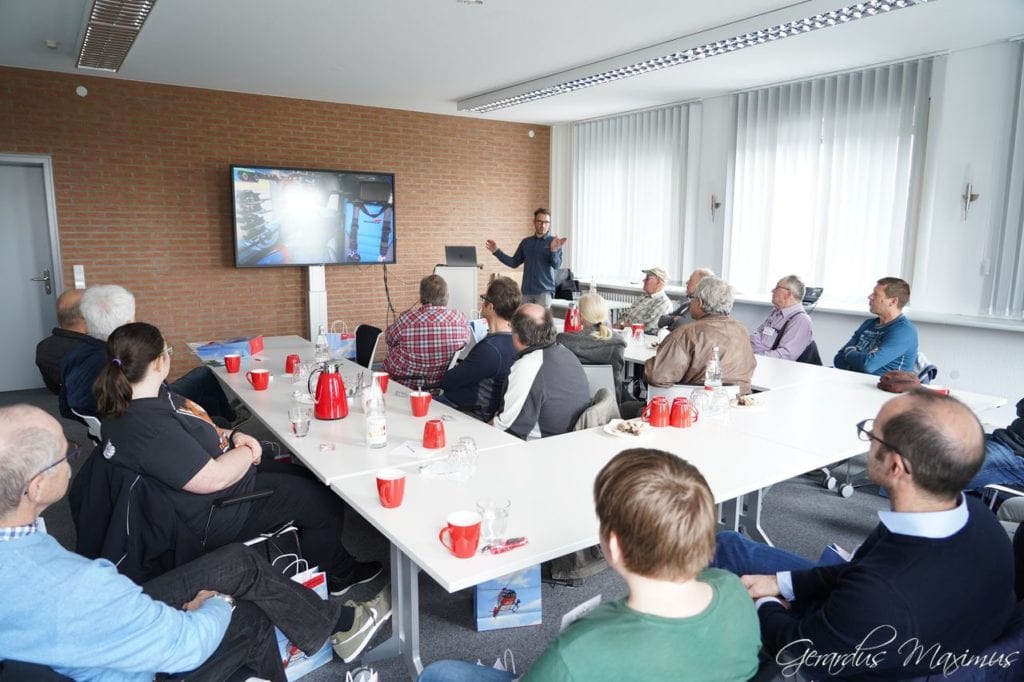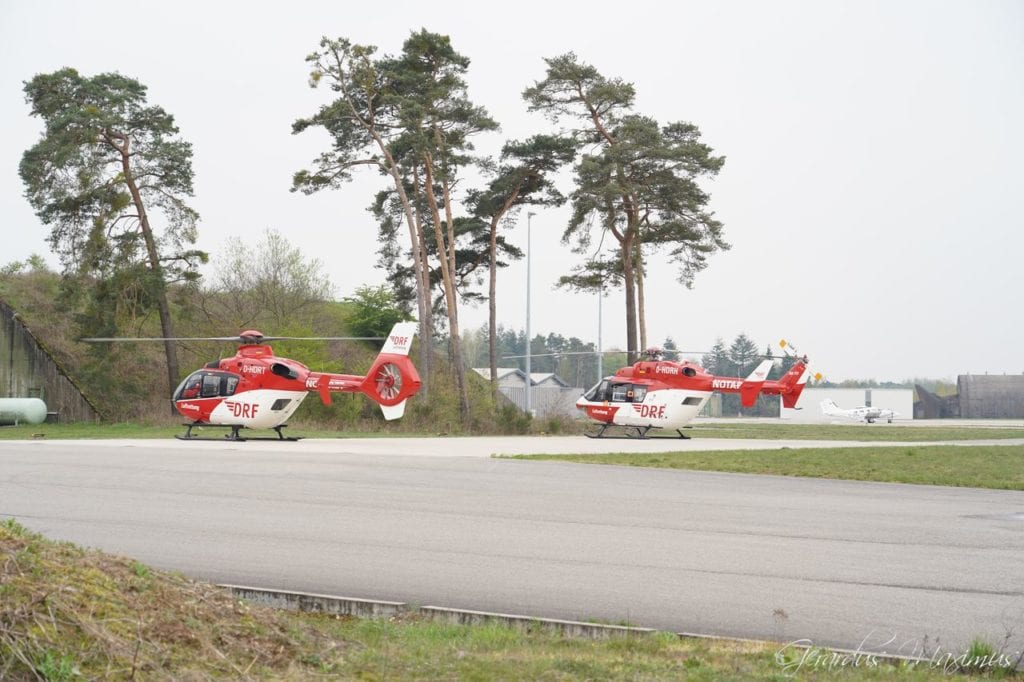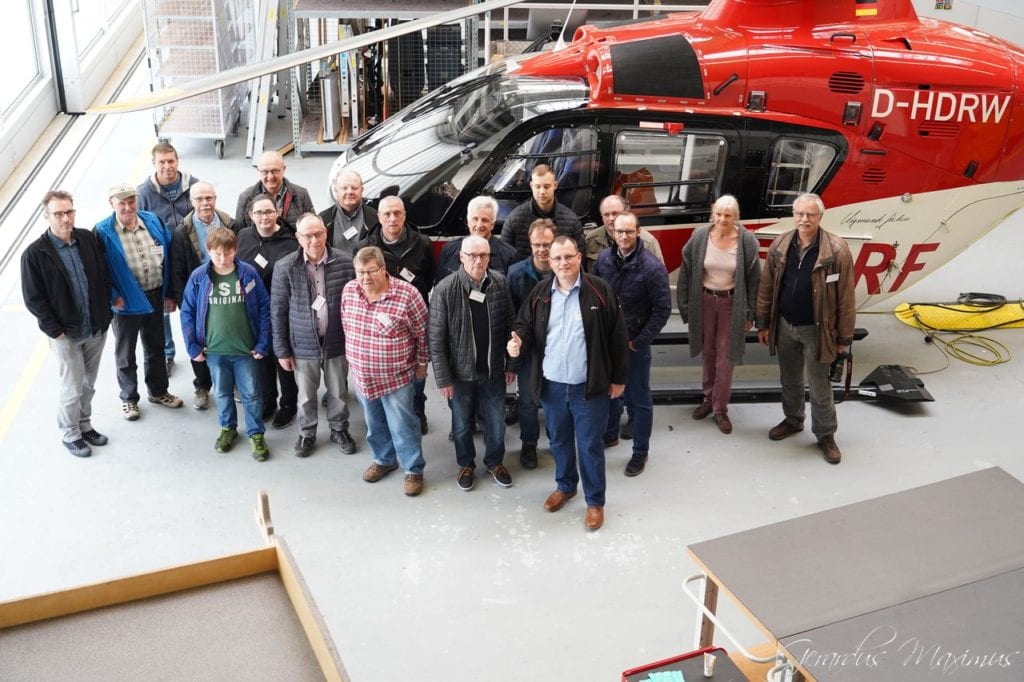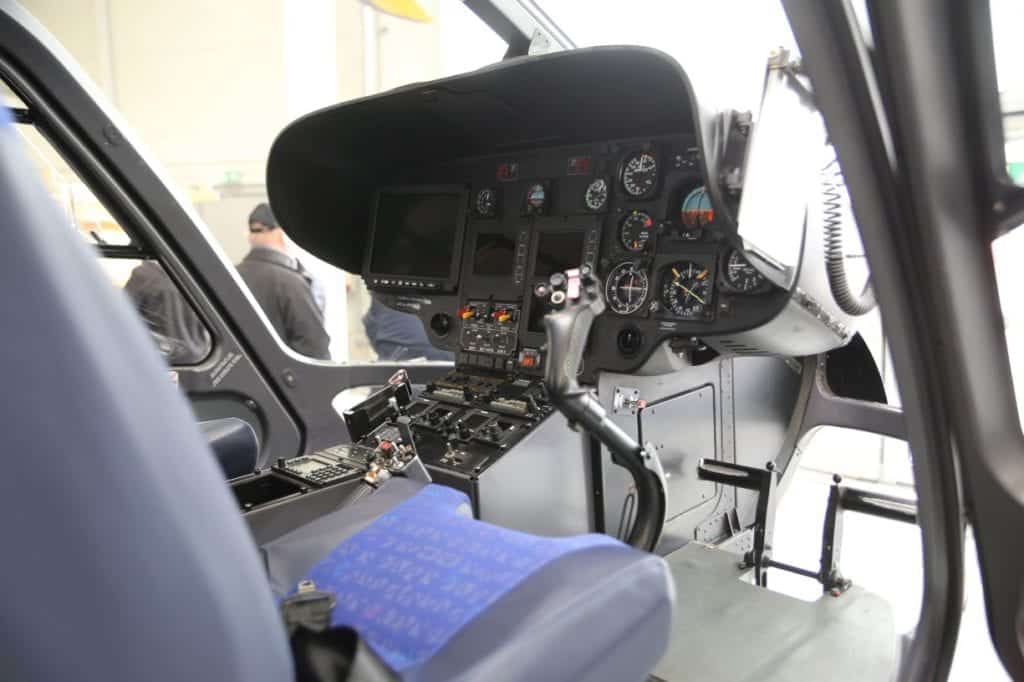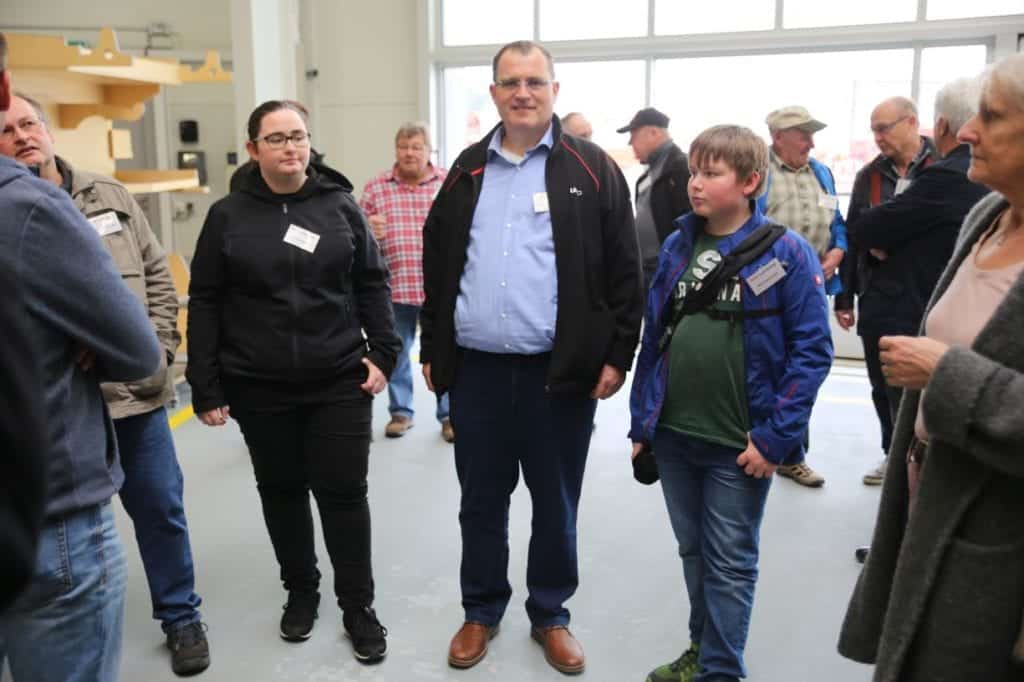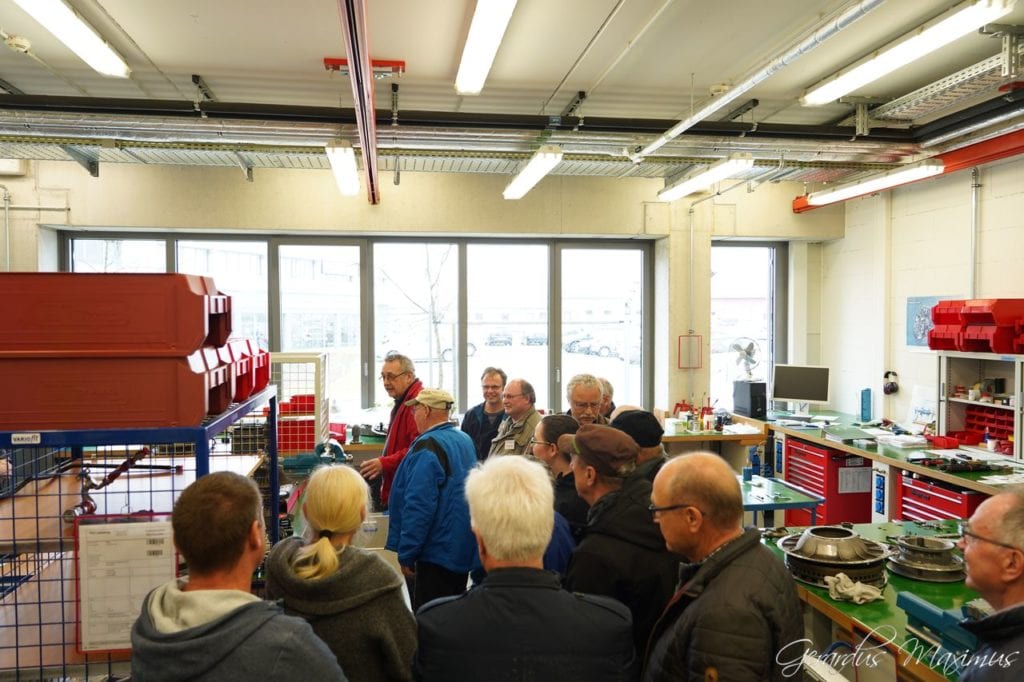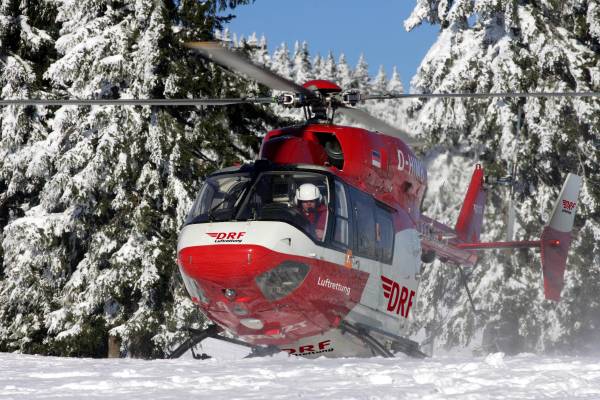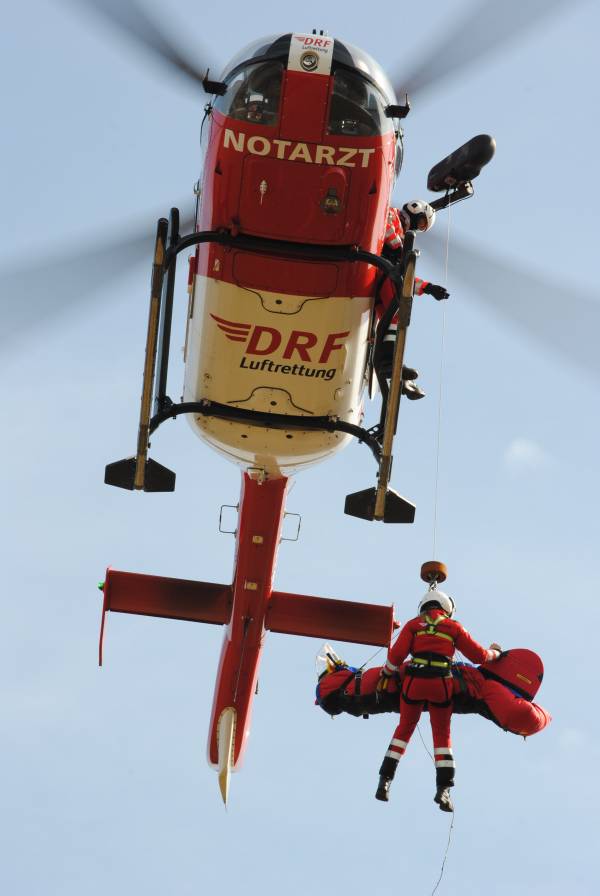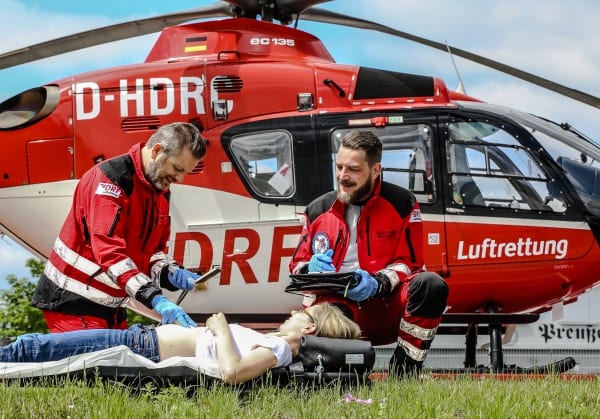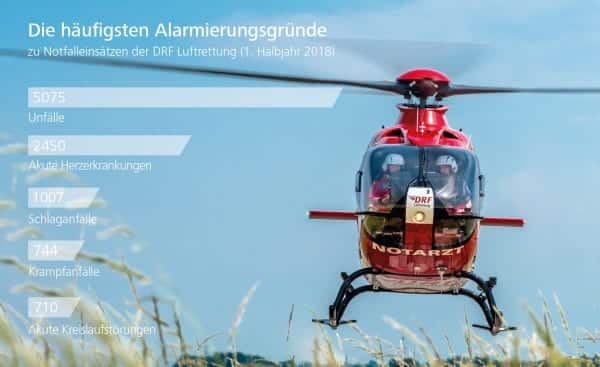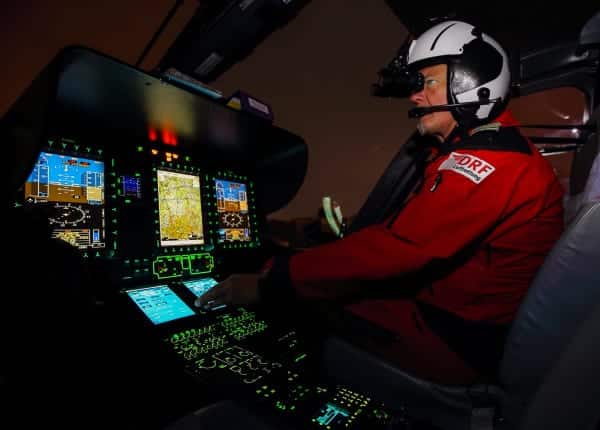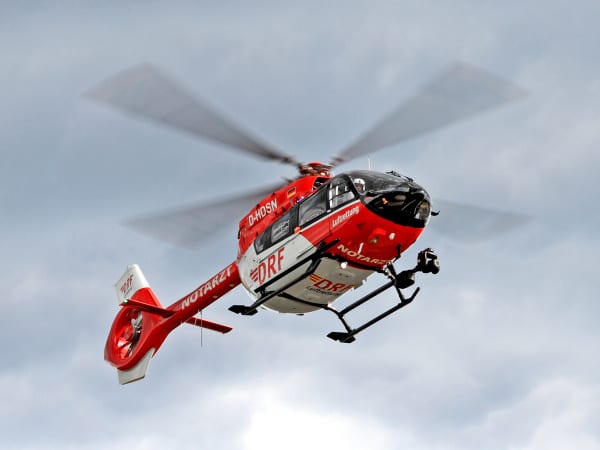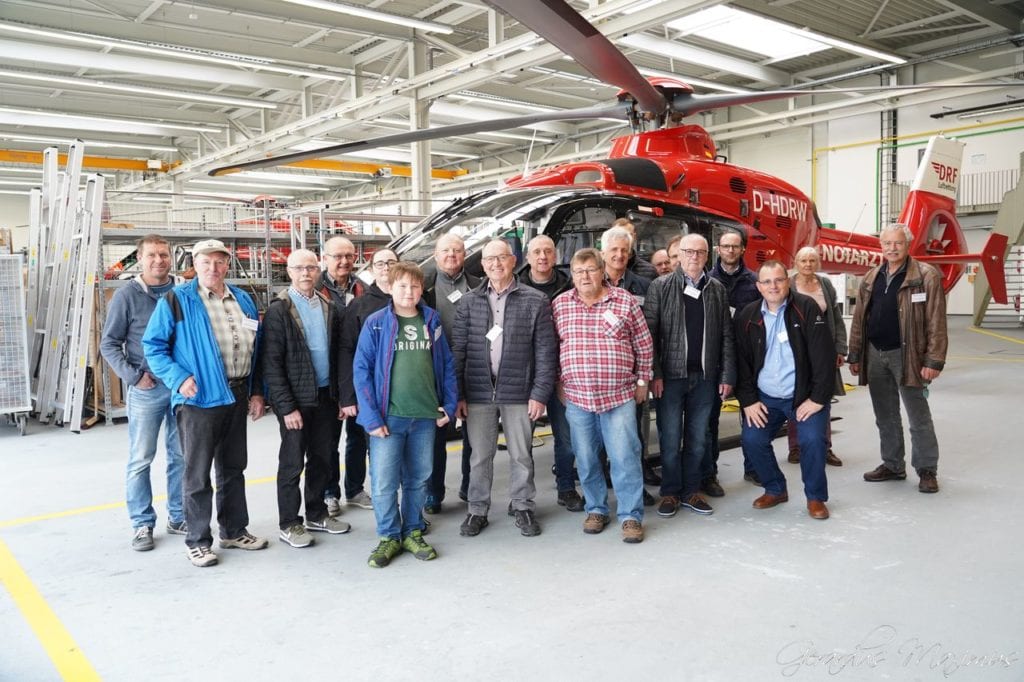Most complex technology to save lives
On 11 April, there was a special outing of the UNIMOG and tractor friends Biberach together with the comrades of the regional group "Ortenau-Elsass" and "Mittelbaden" of the Unimog Club-Gaggenau: Due to the cancellation of another group, member Herbert Weh was able to write to the Unimog community at short notice and thus win 18 members and friends for a tour of the helicopter hangar of the "DRF Deutsche Luftrettung" in the Baden-Airpark.
After the warm welcome with coffee, Sven Kik explained in a 45-minute presentation the development of air rescue in Germany, especially of course in relation to DRF Luftrettung. The fleet of the DRF Luftrettung flies over 40,000 missions every year - an incredible number. The DRF employs 170 pilots, 120 emergency paramedics, 570 emergency doctors and 130 technicians. It operates 29 air rescue stations nationwide. In our area, these are Freiburg, Villingen, Karlsruhe, Mannheim and Stuttgart. The fleet includes more than 50 helicopters and two Lear jets as ambulance aircraft.
Germany's most modern shipyard
The helicopter hangar at Baden-Airpark is the most modern of its kind in Germany and was built only a few years ago. 8 docks allow for the simultaneous maintenance of 8 helicopters. If capacities are free, helicopters from other organisations and owners are also serviced. In addition, there are maintenance teams that carry out minor maintenance directly at the stationing locations of the rescue helicopters.
Security area
The actual shipyard is designed as a security area with restricted access. One understands this immediately, because it is a matter of life and death there: in addition to a huge warehouse for spare parts, there are also various so-called "shops" (workshops): an electronics workshop for the instruments and general electronics, a battery workshop for the maintenance and testing of the batteries, a "sheet metal" workshop for sheet metal work, a "component" workshop for work on fibreglass and fairing parts and an "engine" workshop for engine repair and maintenance.
Engine as the most critical component
A helicopter usually has two turbine engines. The rotor rotates at an incredible 50,000 revolutions per minute. But since this is too fast for the rotor, a speed of 420 revolutions/minute is passed on to the rotor and the rotor blades via a reduction gear. Incidentally, the speed is constant - flight movements are only carried out by changing the angle of attack of the rotor blades. The turbine shovels 2.5 cubic metres of air per second into the engine. This is also important for cooling: because the exhaust gases have to be cooled down from over 1,400 degrees to 300 degrees. By the way, the entire turbine is disassembled for complete maintenance - the employee then has over 2,500 individual parts on his work table that have to be cleaned, checked and, if necessary, replaced according to the maintenance plan. Each individual part has its own serial number and when it is reassembled, each serial number is entered into a log. A second man checks the work of the assembler after each work step. And each work step is then entered by both of them in a comprehensive documentation log by means of a stamp. In this way, it is always clear who installed or removed which component, when and in which engine.
An engine consisting of two turbines then produces around 700 hp of power and consumes around 200 litres of paraffin per hour. The tank supply of about 500 litres is therefore sufficient for about 2.5 hours of flight time. Incidentally, the tank is located in the floor of the helicopter.
Safety above all
Safety is paramount throughout the helicopter maintenance work chain. Even the smallest negligence can result in a disaster. The employees at the DRF Luftrettungs-Werft are excellently trained and always work according to the principle of "quality before speed". Human lives depend on every work step, no matter how simple it may be!
In addition, there is the consistent continuation of the 4- or 6-eyes principle. No one works alone, everyone works in a team. You could literally feel the care and sense of duty of the DRF Luftrettung employees during the tour. Pilots, doctors, patients - their lives depend on the yard's employees.
Speed saves lives
The helicopters can be on site within a radius of 60 km within 10 minutes. Only two minutes after the alarm is raised, the rescue helicopter takes off from the location and flies at up to 278 Km/h to the scene. The network of locations is so close-meshed that these 10 minutes can be reached all over Germany. The DRF now even has 10 stations equipped with helicopters and crews capable of night flights. This was not possible in the past. Rescue missions were only carried out during the day and in good visibility conditions.
Final photo in front of one of the "Quirls
After a good one-hour tour of the shipyard, during which the group of visitors was particularly interested in the propulsion system area, a group photo was taken in front of one of the rescue helicopters. The participants were enthusiastic about the tour and especially about the fact that they were really "in the middle" of the action. Not only from a distance, but directly at the object.
The figures on costs were also impressive: a rescue helicopter costs between 7 - 12 million euros, a single rotor blade about 100,000 euros and an engine 750,000 euros.
With repeated applause, the visitors thanked the DRF Flugrettung staff for the very interesting tour and the wealth of information and the friendly reception. The actual initiator, Herbert Weh, also received a big round of applause from his comrades as thanks for making this visit possible in the first place.
Incidentally, we were informed that the DRF Luftrettung will be holding an "Open Day" on Sunday 29 June 2019 - everyone should make a note of this in their calendars. There will certainly be some activities and demonstrations there.
© Photo + Text Gerhard Große

